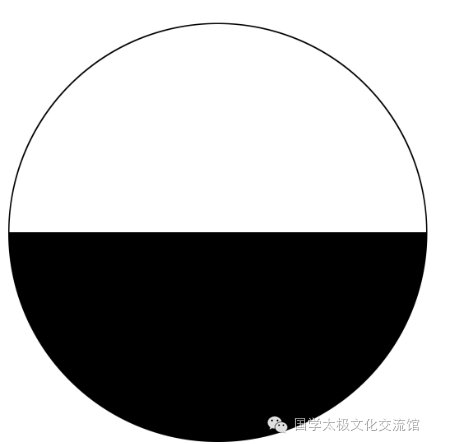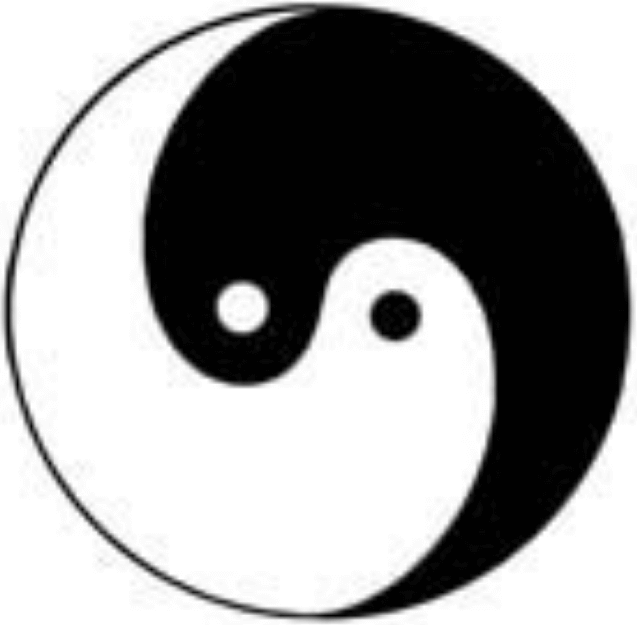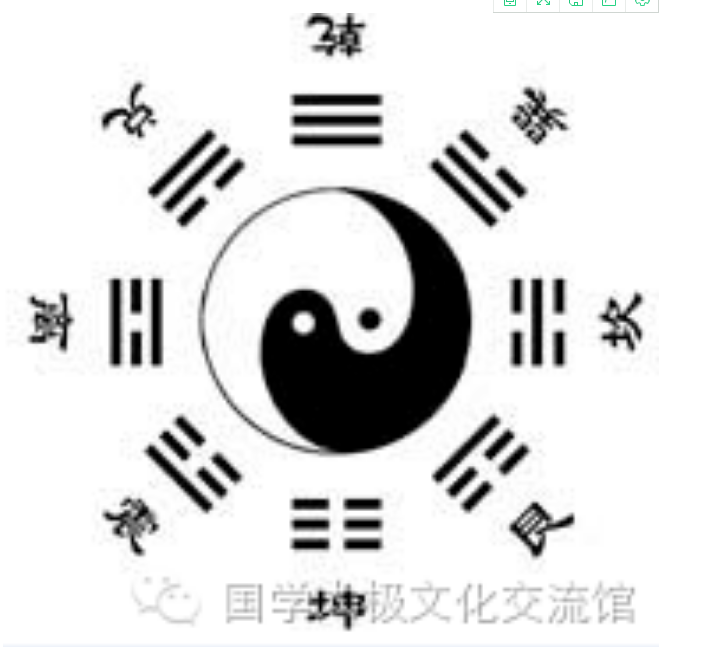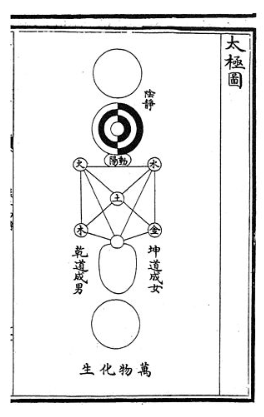Meaning of Taiji
Taiji, meaning Supreme Ultimate, is to clarify the process of the cosmos’ changing from infinite potential to the ultimate until everything grows. Taiji refers to the state before the big ban and the Yin and Yang being generated. In Taiji philosophy, everything and every phenomenon in the vast universe have Yin or Yang in them and outer and inner two aspects. Those Yin and Yang two elements within things are opposing each other, but also co-dependent. This is the general principle of the material world and the origin of all things, which causes things to grow and die.
Origin of Taiji
Taiji is an essential cultural concept and category in Chinese Taoism. According to historical records, the words Taiji first appeared in the book of Zhuangzi, which said the Great Way (大道) lies above the Taiji but is not high; it lies beneath the nadir, but it is not deep; it existed before the heaven and earth, but it is not old; it's older than the remote ages, but it is not ancient. Later, the book Commentaries on Yi also recorded that Yi has the Ultimate Supreme (the source, beginning of the world), which created the Two Poles (heaven and earth), which generated Four Directions, which produced the Eight Trigrams. Based on Taiji's commentaries in the book of Zhou Yi and absorbing the essence of Zhuangzi's chaotic theories, a mature Taiji concept was formed. Like Zhuangzi's chaotic philosophy, Taiji's life attitude towards the material world and the Taiji philosophical thinking contains sober and wise thoughts. The ultimate purpose is to hope that human activities follow the Great Way (principle) and natural law, not bound by worldly possessions, and abide by the code of doing nothing to reach a spiritual state of all-embracing peacefulness and harmony finally.
Taiji Core Concepts
Taiji in Taoism
In Taoism, Taiji refers to the most primitive state of the universe, which appeared after the chaotic ages (Wuji, infinity) of non-separated Yin and Yang. Later, it became the origin of the cosmos. As mentioned before, the words Taiji first appeared in the Zhuangzi and Commentaries on Yi, and they were used in the cosmology and methodology. In traditional Chinese classics, the book Yi had always been a philosophy book that explored the mystery of the universe. The process of Taiji creating Two Poles is the process of Taiji producing heaven ad earth, which can also be called Yi and Yang. Therefore, the concept of Taiji often appears together with Yi-ology. The Taoism Yi had its unique cosmology and cultivation theories, in which notions of Taiji are the critical basic parts.
Taiji Concepts Development
In the Song Dynasty, Taiji was used to explain the neo-Confucianism. The first sentence in "Theory of Taiji Diagram" is from Wuji to Taiji, which linked Wuji and Taiji's concepts with Li (principle). It’s believed that The Way (道) was Li (principle, 理).
In the book "Zhuzi's Language Category," neo-Confucianism master Zhu Xi also said that Taiji is just a fundamental principle of chaos theory, which contains everything including Yin and Yang, hard and soft, odd and even, and more.
In the book Translation of Zhang Zi's Zheng Meng written by Wang Fuzhi, the Way is the general principle of heaven, earth, and everything, which is also the Taiji.
Thus: Way = Taiji = Yin+Yang
Taiji Symbol
Wuji Symbol
"Taiji Yin Yang Symbol" is often mistaken for the "Taiji Symbol." "Taiji" comes from the Wuji, the chaotic state before Yin and Yang are separated. Thus, the Wuji Symbol doesn't have the Yin Yang Fish designs, just a circle with many small dots inside.
According to I-ching, Yi contained Taiji, which created two poles. The two poles here referred to the Yin and Yang; thus, the following symbol was created: As the Yin and Yang are not entirely separated, they are actually dependent on each other. Thus, a symbol like the following one appeared, which was said to be created by Chen Xiyi, the ancestor of Chen Tuan.
At that time, the symbol was not called Taiji Symbol. Later, Song Dynasty Taoist scholar Chen Tuan added the primordial eight trigrams created by King Wen of the Zhou Dynasty,
As the Yin and Yang are not entirely separated, they are actually dependent on each other. Thus, a symbol like the following one appeared, which was said to be created by Chen Xiyi, the ancestor of Chen Tuan.
At that time, the symbol was not called Taiji Symbol. Later, Song Dynasty Taoist scholar Chen Tuan added the primordial eight trigrams created by King Wen of the Zhou Dynasty, making the “Primordial Symbol."
Chen Tuan, versed in both internal alchemy and Yi-ology, completed the Wuji Symbol and added the five elements, creating the Wuji Symbol of Inner Alchemy. He passed the new symbol of Wuji to his disciple Zhong Fang, who gave it to Mu Xiu, following whom was the Zhou Dunyi, another great master of neo- Confucianism. The present-day Taiji Symbol is the one from Zhou Dunyi.
making the “Primordial Symbol."
Chen Tuan, versed in both internal alchemy and Yi-ology, completed the Wuji Symbol and added the five elements, creating the Wuji Symbol of Inner Alchemy. He passed the new symbol of Wuji to his disciple Zhong Fang, who gave it to Mu Xiu, following whom was the Zhou Dunyi, another great master of neo- Confucianism. The present-day Taiji Symbol is the one from Zhou Dunyi. This new Wuji Symbol of inner alchemy is the same as the Taiji Symbol. It includes five layers. Reading it from the bottom to top, it’s the Wuji Symbol of Inner Alchemy.
The bottom circle is the Gate of Xuanpin, which is the starting point of the inner alchemy. In the human body, it refers to the interspace of two kidneys.
This new Wuji Symbol of inner alchemy is the same as the Taiji Symbol. It includes five layers. Reading it from the bottom to top, it’s the Wuji Symbol of Inner Alchemy.
The bottom circle is the Gate of Xuanpin, which is the starting point of the inner alchemy. In the human body, it refers to the interspace of two kidneys.
 The second circle to the bottom is to smelt the Qi from the bottom circle and make it the congenital Qi.
The third layer is to mix the five elements harmoniously. Those five elements have different represents. Wood represents liver; fire represents heart; earth represents spleen; gold (metal) represents lung; water represents kidney.
The second to the top layer is composed of Kuan trigram and Li trigram. Coming to this layer, the essence already acquired is mature. The middle line of Kan trigram is Yang, and the middle line of Li trigram is Yin. They represent kidney water and heart fire, respectively. Those two elements mix with each other, and the Yang trigrams are extracted and added into the Yin trigrams, making the Qian Trigram, which means that the human body becomes the infantile body of pure Yang.
The top layer is to smelt the body and return everything to the state of Wuji.
The whole inner alchemy process is completed; those who underwent these procedures will have a sacred body and become immortals. Therefore, the internal alchemy process is also called reborn to be immortals.
Reading it from top to bottom, it’s the Taiji Symbol.
Taoists believed that from the idea of the Great Way creating the cosmos, it should start from the Taiji being separated into Yin and Yang. Then, five elements, gold (metal), wood, water, fire, and earth, were created. Following the elements is the universe, including humans, plants, animals, and everything else. In the last, the universe will return to where it begins, Wuji state.
The second circle to the bottom is to smelt the Qi from the bottom circle and make it the congenital Qi.
The third layer is to mix the five elements harmoniously. Those five elements have different represents. Wood represents liver; fire represents heart; earth represents spleen; gold (metal) represents lung; water represents kidney.
The second to the top layer is composed of Kuan trigram and Li trigram. Coming to this layer, the essence already acquired is mature. The middle line of Kan trigram is Yang, and the middle line of Li trigram is Yin. They represent kidney water and heart fire, respectively. Those two elements mix with each other, and the Yang trigrams are extracted and added into the Yin trigrams, making the Qian Trigram, which means that the human body becomes the infantile body of pure Yang.
The top layer is to smelt the body and return everything to the state of Wuji.
The whole inner alchemy process is completed; those who underwent these procedures will have a sacred body and become immortals. Therefore, the internal alchemy process is also called reborn to be immortals.
Reading it from top to bottom, it’s the Taiji Symbol.
Taoists believed that from the idea of the Great Way creating the cosmos, it should start from the Taiji being separated into Yin and Yang. Then, five elements, gold (metal), wood, water, fire, and earth, were created. Following the elements is the universe, including humans, plants, animals, and everything else. In the last, the universe will return to where it begins, Wuji state.
You Might Like
Tai Chi Exercises
Taoism (Daoism) - Definition, Founder, Origin, Beliefs and Practices


 making the “Primordial Symbol."
making the “Primordial Symbol." 
